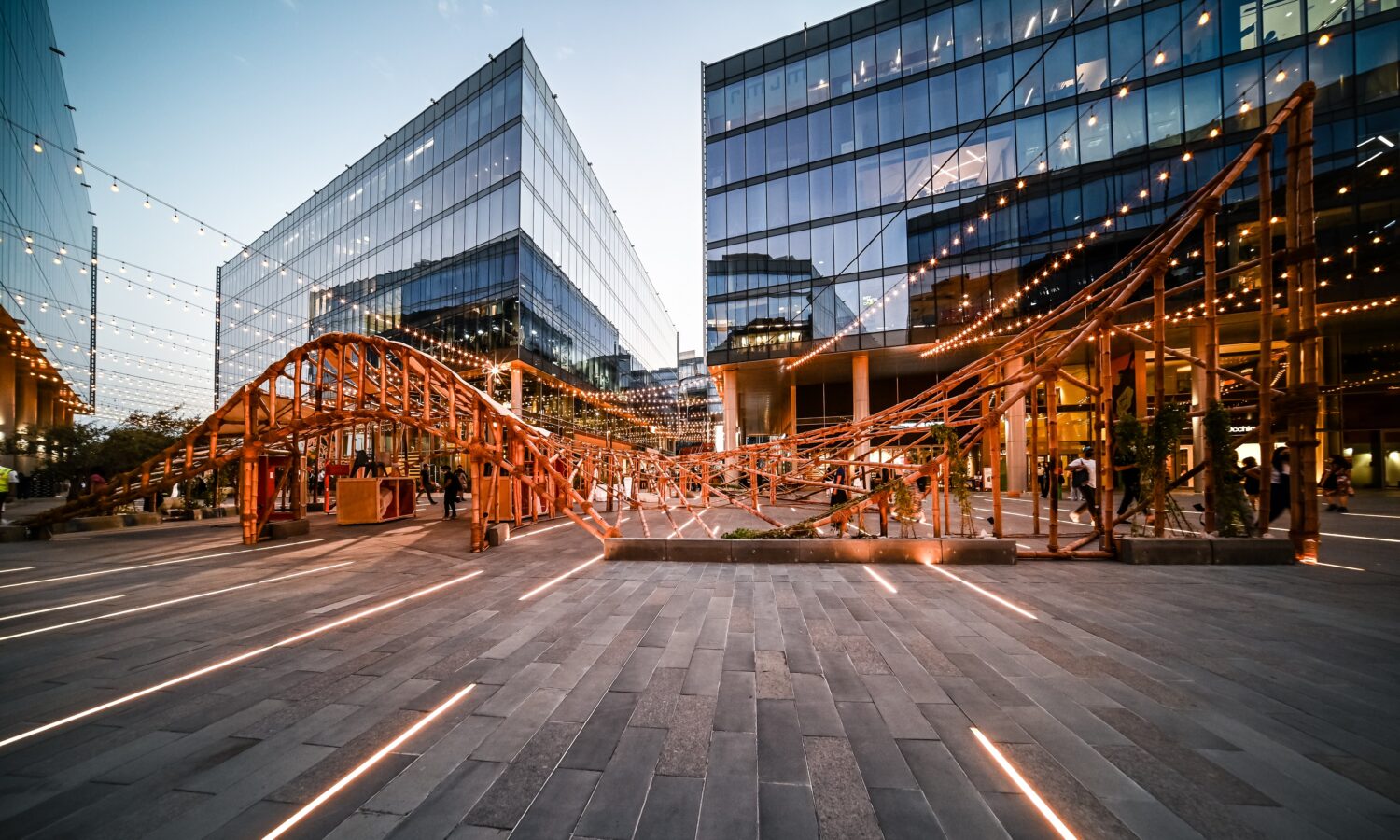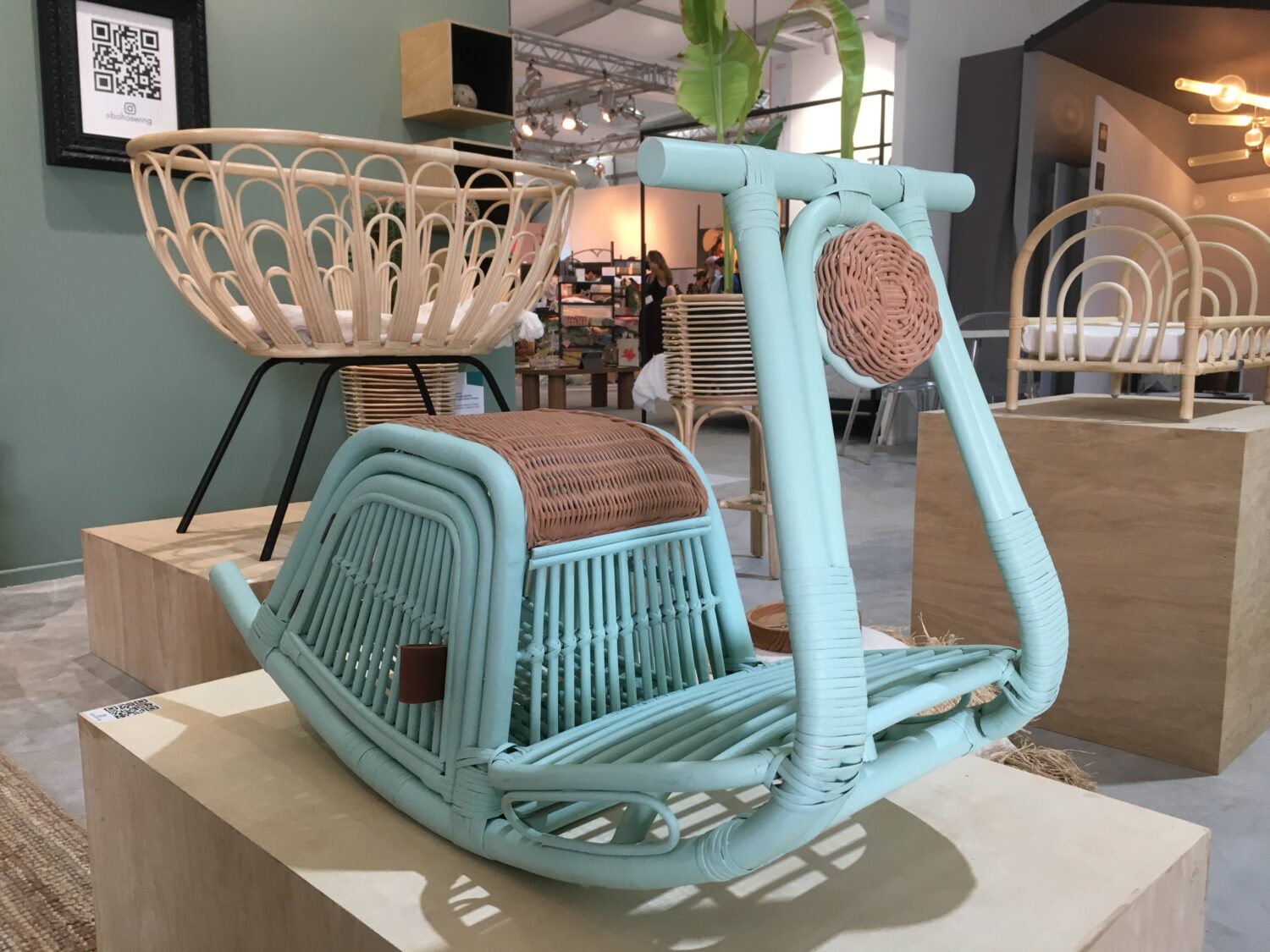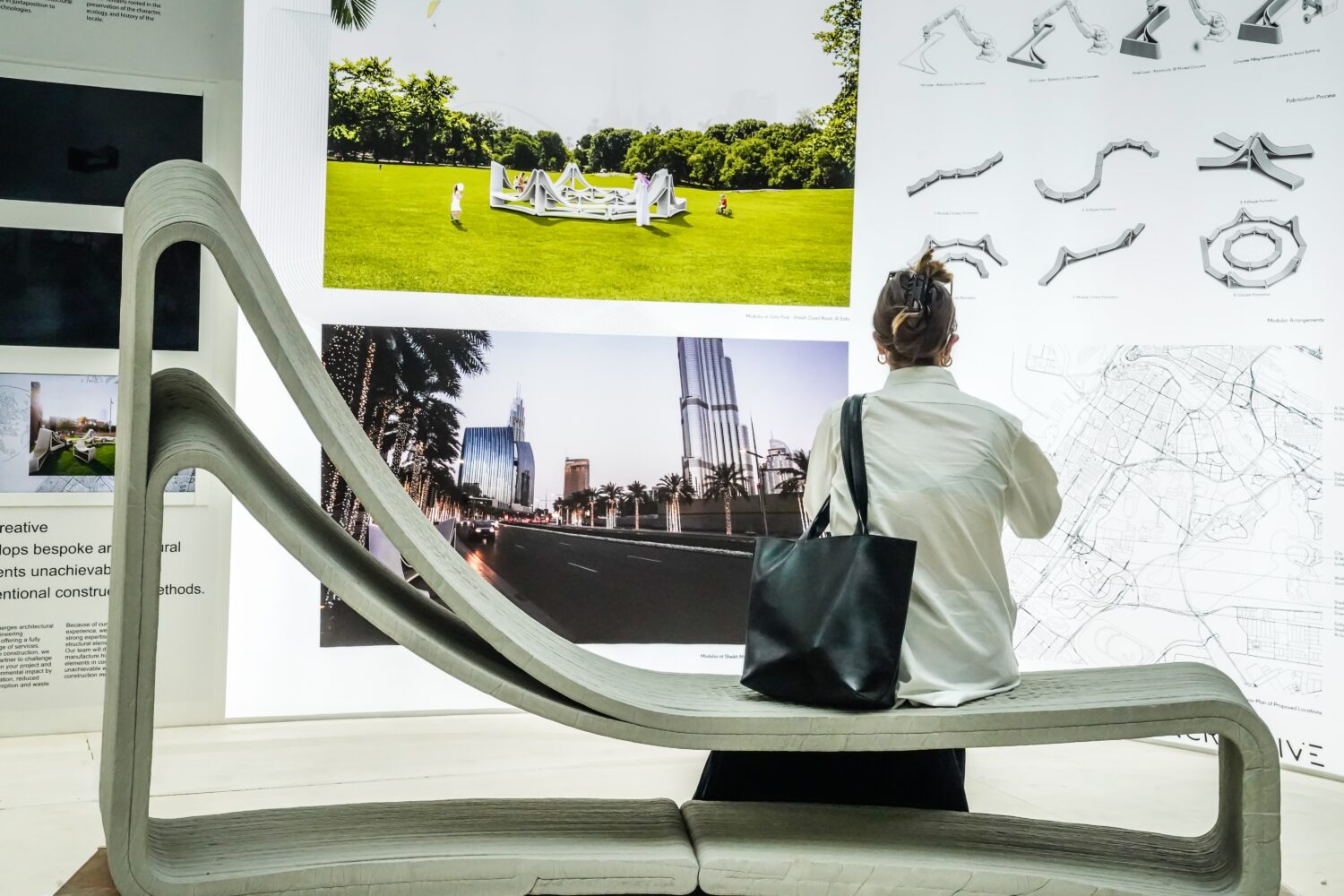
Maghie Ghali
As the UAE continues to expand at a rapid pace, questions about the sustainability and environmental impact of Dubai have arisen over the years.
With the high energy-consuming Emirate striving for a cleaner footprint, environmentally-conscious projects and proposals are growing in number as Dubai pushes for an eco-friendly existence.
At Dubai Design Week (DDW) in November 2021, sustainable designs, zero-waste architecture, and recycled materials were heavily featured at the annual fair, which gathers projects from across the globe to showcase their latest creations.
Showcased as part of Downtown Design, Boho Swing put forward a series of furniture pieces reusing natural materials that would otherwise end up in landfills or burned to dispose of.

“We are using mostly rattan, mango trees, coconut shells, the coconut itself and it’s all handmade, so you can’t find two identical pieces,” Boho Swing co-founder Patrycja Ignatiuk said. “Mango trees only grow fruit for five years and after that, you have to cut the trees down and grow new ones. So all this raw material is waste, that’s why we’re using this material”.
“Mangoes are a big industry in the Middle East, so they have a lot of [its trees] leftover and they don’t know what to do with it,” she added. “It’s something that’s already there and ready to be used. It’s the same with rattan, which grows very fast and then needs to be cut down.”
As part of DDW’s program, many public installations around Dubai’s design district D3 are focused on environmental design and urban planning. This year, the Abwab installations are themed on regenerative architecture and restorative design, meaning fewer resources and an energy-consuming approach to urban construction.
An open call resulted in a large bamboo structure called “Nature in Motion” by Ahmed El-Sharabassy, housing an exhibit by Lebanese studio Bits to Atoms, called “Pulp Fusion,” which proposes new materials made of recycled cardboard and organic matter.
“Regenerative means that the actual piece of architecture can sustain itself for a long time, using natural resources to self-regenerate and last longer, without having to consume external energy sources,” Abwab curator Ghassan Salameh told Fanack. “The idea is that you can develop large structures without having to go into heavy production or heavy use of material.
“Bits to Atoms built a series of outdoor furniture that, even when you dispose of [them], will go back into the ground,” he added. “They have seeds in them so they will grow back into plants. This is the idea of regenerative architecture. It’s actually a positive impact or a positive footprint rather than negative.”
Salameh is also curating the 2040: D3 Architecture Exhibition, which puts forward proposals for The Dubai 2040 Urban Master Plan for sustainable urban development. Their projects include building 15-minute cities to cut down on the need for private transport or traveling far for basic needs.

“Dubai’s leaders have the means to do things differently if they want to, so that’s why it’s important to show other ways of doing things,” Salameh said. The point here is to suggest proposals that are in the right direction, that actually discuss these issues.
“The [2040 Urban] Master Plan is about improving the quality of life in Dubai and they actually want to work on a plan that touches different areas and public spaces,” he added. “So we invited five architects, each one of them is curating a section of the exhibition and interpreting a sub-theme of the general plan – infrastructure, mobility, transportation, public educational spaces, and ecotourism.”
Expo 2020, arguably the region’s most prominent event, also has sustainability at the forefront. As one of the world fair’s three key subthemes, sustainability is incorporated into many of the pavilions across the mega-city, purposefully built for the six-month event.
Terra – the Sustainability Pavilion – epitomizes the new avenues Dubai is exploring for a more eco-friendly future. The pavilion is entirely self-sufficient, generating 4GWh of power via 4,912 solar panels each year. A graywater recycling system reduces the water use in the landscape by 75 per cent, mostly needed to water native plant species often overlooked by developers.
“Striving to be one of the most sustainable World Expos in history, Expo 2020 embodies the principles of sustainable development, respecting and upholding ecological limits and natural resource constraints, encouraging prosperity and well-being, while creating the conditions for a better quality of life for all of us across the planet,” Maha Al Gargawi, Senior Vice President of Political Affairs at Expo 2020 told Fanack. “As a result, once the doors close on 31 March 2022, the site will turn into District 2020 and will repurpose more than 80 percent of the site’s built environment into a human-centric smart city.
“A mandate to support the UAE’s journey towards an innovation-driven economy, District 2020 will bolster industry and technology growth in the region,” she added, “retaining some of Expo 2020’s iconic structures, including Al Wasl Plaza, the Sustainability Pavilion, the Dubai Exhibition Centre and, of course, the three Thematic Districts, in addition to cutting-edge digital and physical infrastructure.”
These projects are all examples of a larger push by the UAE to be more sustainable and less damaging to the environment. During their attendance at the COP26 climate conference in Glasgow in November 2021, the UAE signed several agreements targeting better policies for averting climate change and initiatives with a positive environmental impact.
By 2030, the UAE has pledged to plant 100 million mangrove trees, a saline-tolerant plant that reduces carbon emissions and provides natural habitats for baby fish and other sea creatures. The trees also protect the UAE’s coast from rising sea levels and erosion from storms.
Set to host COP28 in 2023, all eyes will be on Dubai to prove its commitment to being more eco-friendly.
“We will put all our capabilities to make the conference a success. The UAE will remain committed to global climate action to protect the planet,” tweeted Dubai ruler and UAE Prime Minister Sheikh Mohammed bin Rashid al-Maktoum.
Other projects, such as the UAE’s research into cloud-seeding technology – a technique that improves rainfall by firing salt flares into clouds – and an increase of green hydrogen fuel for vehicles, were also put forward.


